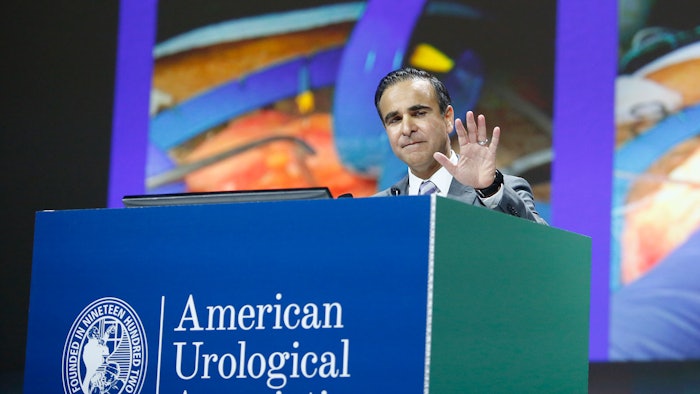New techniques in sexual medicine
Advancements in urological tools and techniques improve patient outcomes.

Surgical techniques and tools for sexual medicine are evolving as quickly. Three leading surgeons presented their latest advances in “Semi-Live Surgeries/Surgical Techniques: Sexual Medicine” during the Sunday Morning Plenary session.
Transfascial fixation for inflatable penile prosthesis
Inflatable penile prostheses have been in use for 50 years with multiple changes in reservoir placement. The initial placement below the transversalis fascia in the space of Retzius was subject to major complications, from bladder perforation to compression and/or laceration of the external iliac vein, small bowel erosion or obstruction and more, said Mohit Khera, MD, MPH, MBA, professor of urology at Baylor College of Medicine.
Ectopic placement was developed in 2002, followed by flat reservoirs in 2010, then high and low submuscular placement, all with important rates of patient dissatisfaction, adverse events and repeat procedures. Dr. Khera introduced low submuscular placement with transfascial fixation (TFF) in 2020.
“If you fixate the tubing in the fascia, you have reduced risk of migration,” he explained. “If you want to increase concealment, you have to be below the rectus muscle.”
A report of 31 patients with low submuscular reservoir placement with TFF found that 31% could “feel” their reservoir but that none of the patients reported being bothered by the reservoir. There were no revisions, no herniation or migration. Overall satisfaction with reservoir concealment was 4.5/5.
Extra-tunical grafting/wrapping
Patients with Peyronie’s disease typically show localized volume loss with penile narrowing, most often as an hourglass shape to the penis, an indentation or notching and sometimes a distal narrowing similar to a Bordeaux bottle. Patients may also have penile instability, a hinge effect.
“Oral medications play no role here,”’ said Matthew Ziegelmann, MD, associate professor of urology at Mayo Clinic. “Gold standard is consideration of surgery.”
Extra-tunical grafting was initially introduced in 2018, he said, placing the graft material over Buck’s fascia via a ventral longitudinal incision.
“A lot of us are using this in our armamentarium,” Dr. Ziegelmann said. “One advantage is you can tailor the graft material to fit each patient. It is dealer’s choice when it comes to the graft material; there are very little comparative data available. We use Tutoplast® human pericardium largely because it is readily available.”
New disposable Furlow insertion tool
The Furlow insertion tool, developed by William Furlow, MD, in 1974, is an integral part of penile prosthesis surgery. The reusable tool is intended to be disassembled and sterilized between uses, but recent evidence suggests improperly cleaned or sterilized inserters may be a source of infection.
“A single-use Furlow was released in 2022 and is now broadly available,” said Jeffrey C. Loh-Doyle, MD, assistant professor of urology at the University of Southern California. “The disposable tool has a larger diameter, which can be an advantage in use, and the locking mechanism feels very smooth, very strong. We felt no difference in placement.”
While the disposable tool is at least as easy to use as the original Furlow inserter, it is not for every surgeon. High-volume surgeons may want to continue using reusable tools based on cost if they can trust their sterilization service.
“The advantage may be in places where you don’t necessarily trust the sterilization services,” Dr. Loh-Doyle said. “In those locations, a single-use tool can be a very viable alternative.”